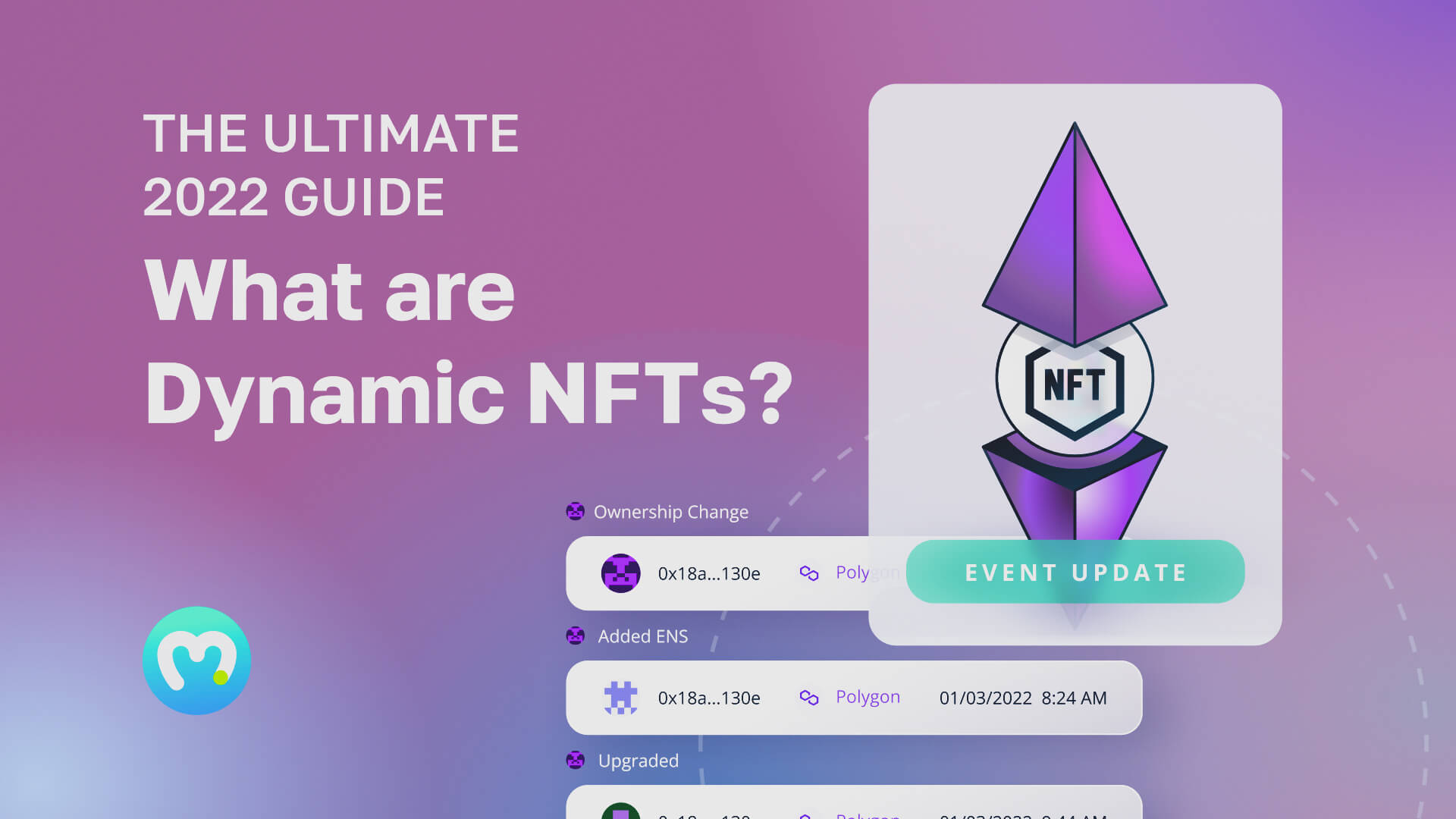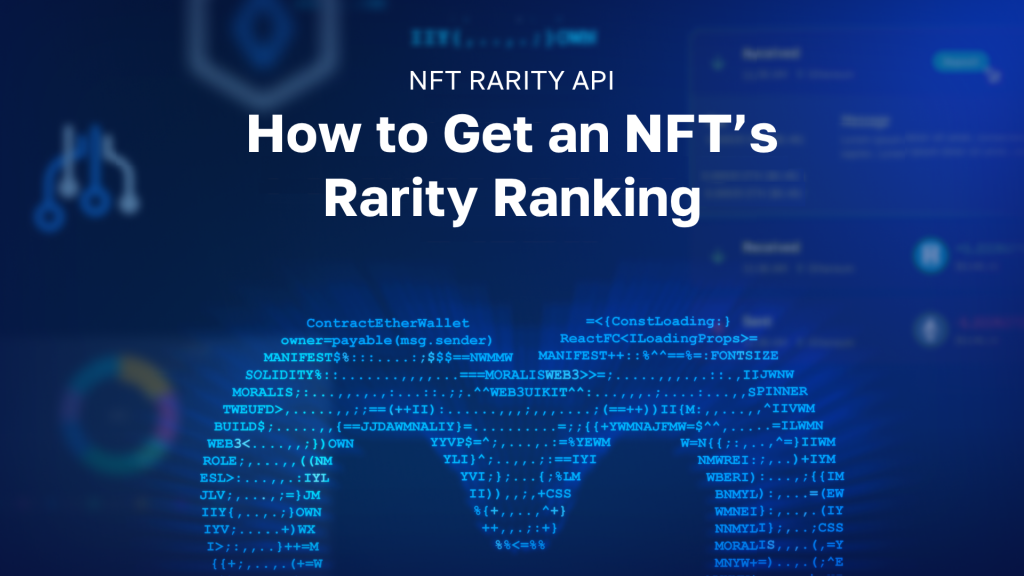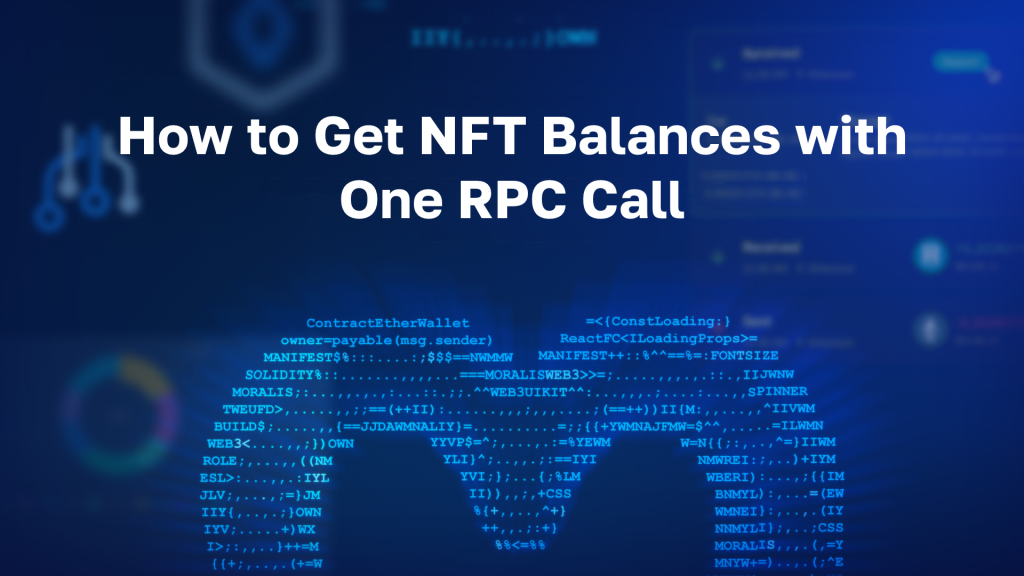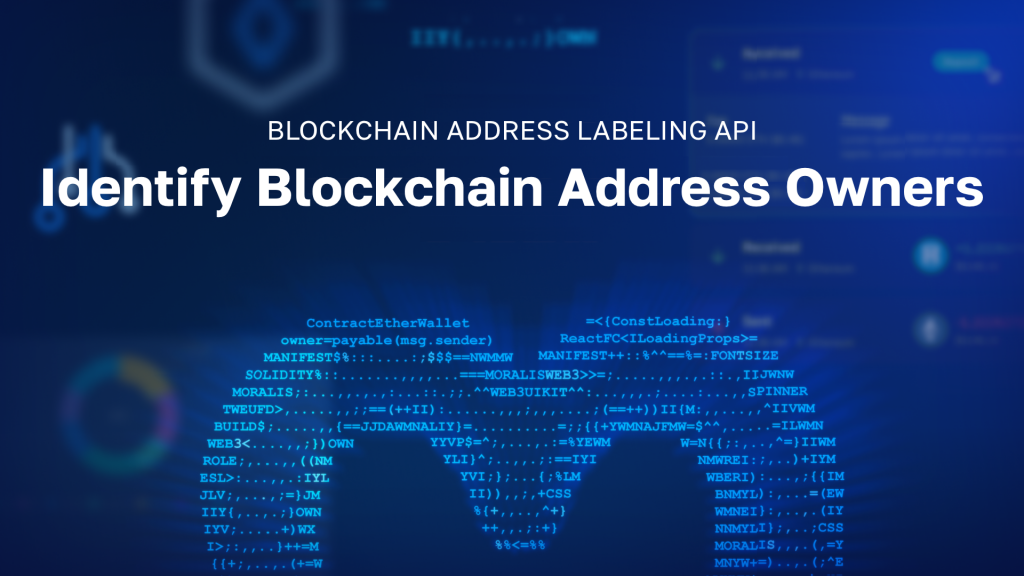NFTs (non-fungible tokens) have quickly become one of the Web3 community’s most prominent features. These tokens are making their way into the mainstream, with high-profile public figures launching their own NFT projects and collections. This, combined with these tokens’ vast number of use cases, makes them exceedingly attractive. Moreover, these tokens and the underlying technology are continuously improving, inaugurating the next step in the evolution of NFTs: dynamic NFTs. So, what are dynamic NFTs, how do they work, and why are they useful?
If you’re interested in dynamic NFTs, follow along as we explore these tokens in further detail throughout this article. We’re going to start off by looking at what a dynamic NFT actually entails. Following this, we’ll dive deeper into how dynamic NFTs work. Plus, we’ll compare them to the more familiar concept of static NFTs. In addition, we’re going to explore some potential use cases for dynamic NFTs as this further illustrates why they are helpful. Lastly, we’ll take a closer look at how you can create your NFT using Moralis – the ultimate Web3 backend platform.
The operating system provides some of the best Web3 development tools. These include Moralis Speedy Nodes, Moralis’ Metaverse SDK, Price API, and much more. These tools, combined with the system’s underlying backend infrastructure, ensure that users receive the best developer experience on the market! Thus, if you haven’t already, sign up with Moralis right away! Create your Moralis account for free, and become a blockchain developer in record time! Now, without further ado, let’s begin our journey by answering the question, “what are dynamic NFTs?”.
What are Dynamic NFTs?
To answer the ”what are dynamic NFTs?” question, a good starting point is to analyze the terminology and clearly define the individual parts of the phrase. Thus, let’s dissect the concept and start with a brief explanation of NFTs.
“NFTs” is an abbreviation for “non-fungible tokens”, and they are essentially entirely unique digital assets that exist on a blockchain. Each NFT is one-of-a-kind in that they have a unique contract address and token ID. Moreover, it’s possible to attach images, files, data, links, etc., to a token’s metadata. As such, NFTs can represent unique objects, both digital and physical. What’s more, once an NFT is minted, the token ID and metadata are permanent, making these tokens static. However, before continuing, if you’d like more detailed information regarding non-fungible tokens, make sure to check out our article on the Moralis blog providing a more in-depth explanation of NFTs.
With an adequately better understanding of traditional NFTs, we can take a closer look at what the term ”dynamic” means in this context. In many instances, it’s beneficial to provide NFTs with the ability to react and respond to external conditions. Why? Because that can trigger alterations to the token’s metadata, which is precisely what ”dynamic” refers to in this case.
Take a progression-based game as an example, where NFTs represent in-game avatars. Avatars might have different skills, such as strength, speed, agility, etc., specified in the token’s metadata. As players progress in the game, we need to update elements so that tokens reflects the players’ efforts. This essentially means that dynamic NFTs retain a unique identifier but are provided with the possibility to alter and update aspects of their metadata based on external conditions. Now that we’ve answered the “what are dynamic NFTs?” question, let’s explore how dynamic non-fungible tokens work.
How Does a Dynamic NFT Work?
Dynamic NFTs can evolve using both off-chain and on-chain computations, and the technology making this possible is smart contracts. Whenever an NFT (non-fungible token) is requested, smart contracts evaluate off-chain and on-chain data to determine a response that is presented to the users. To make this more understandable, here is an illustration of what the process might look like:
- A request is first initiated to a smart contract for an NFT.
- The request is received by the smart contract for processing.
- The smart contract makes a call for on-chain data and processes the results.
- The contract uses an oracle to make a call for off-chain data and processes the results.
- Both the off-chain and on-chain data are evaluated. Then, the smart contract returns media one or two to the requestor.
Essentially, this means that it’s smart contracts that allow NFTs to change, update, and expand over a period of time. Accordingly, smart contracts determine if a non-fungible token should change and, if so, then alters the metadata of a dynamic NFT based on the off-chain and on-chain data.
Now that you have a solid understanding of the above and can answer the “what are dynamic NFTs?” question confidently, you might want to create dynamic NFTs. If so, we recommend reading our article on Web3 contracts. That article covers the essential parts of smart contracts, and it provides an in-depth explanation of what these Web3 contracts entail.
You can also learn how to create smart contracts here at Moralis to find out more about the intricacies of smart contract development. Also, you can discover the necessary skills required. For example, smart contracts are written, in general, using the Solidity programming language. As such, this is a skill that you should learn if you’re looking to become a proficient smart contract developer.
Dynamic vs Static NFTs
To answer the “what are dynamic NFTs?” question, we also have to look at “static” NFTs. Thus, let’s do a comparison of the two. Today, most users are most likely familiar with static NFTs. A static NFT is a token with permanent and immutable traits recorded on the blockchain. Examples of static NFTs can be images, videos, music, items in a game, etc. In many cases, such as digital art or digital collectibles, static NFTs make perfect sense. In fact, it might even be the immutability aspect of static NFTs that makes them valuable.
However, the next step in the evolution of NFTs (non-fungible tokens) is dynamic NFTs, and they might come to be quite useful in the future of the blockchain space. These types of tokens combine the verifiable, one-of-a-kind qualities of static NFTs with dynamic data inputs. What’s more, dynamic NFTs can take inputs from both off-chain and on-chain data sources to alter the metadata of the tokens. Therefore, the main difference between a static and dynamic NFT is the ability of the token’s metadata to change.
As such, it’s possible to find use cases for both static and dynamic NFTs, and one will probably not replace the other, meaning there is room for both static and dynamic NFTs within the crypto realm. However, the introduction of dynamic NFTs into the blockchain ecosystem provides further flexibility and adds even more potential use cases for these tokens.
In the following section, we will learn more about some use cases for dynamic NFTs, which will hopefully make the distinction between dynamic and static NFTs even more transparent!
Dynamic NFT Use Cases
Earlier in this article, we mentioned that in-game avatars are a potential use case for dynamic NFTs. However, this is only one example. Thus, we found it appropriate to present two additional use cases in this section that can illustrate the benefits of dynamic NFTs. As such, you’ll be able to explain the “what are dynamic NFTs?” question more logically. These two use cases are:
- NFT Sports Cards
- Real Estate
NFT Sports Cards
The first examples are sports cards, and in this case, we’re going to take a football player as an example. Let’s say that we have a dynamic NFT representing a real-world football player. The NFT could have information, such as speed, agility, strength, goals scored, assists, etc., stored in the token’s metadata.
However, as the season continues, these stats will change as, for example, the player might score a few goals. This means that the dynamic NFT might have the option to fetch off-chain data regarding the player’s progression and update the metadata accordingly. This would not be possible with a static NFT since the metadata would be permanent once someone creates the token in the first place.
Real Estate
The second example is real estate, and in this instance, we’re going to use a house. Now, let’s say we have a dynamic NFT representing a house. In the case of tokenizing real-world assets, it’s beneficial to have the ability to change metrics, something that is often required.
In this example, we would like the metadata of the NFT (non-fungible token) to reflect specific changes that might occur to the property, which is of potential interest to future buyers. So, for example, the metadata should present maintenance history, age, market value, past sales, etc. As such, when tokenizing real-world assets such as property, it’s clearly beneficial to have the ability to update and change the metadata of the tokens.
Create Your Own NFT
Now that you’re moderately more familiar with dynamic NFTs, can answer the “what are dynamic NFTs?” question, and understand how they can be used, you might be interested in creating your own tokens. In that case, you have certainly arrived at the right place. It doesn’t matter what type of NFT you’re looking to create; Moralis is the best platform that’s incredibly easy to use for any type of NFT development.
With the backend infrastructure of Moralis and some of the best development tools on the market, you can create all sorts of interesting NFTs in a matter of minutes. One tool that significantly aids in NFT development is Moralis’ NFT API. In fact, when utilizing Moralis, you’ll be able to create your own NFT in five simple steps!
Not only will you be able to create single NFTs, but Moralis provides you with all the necessary tools to create your own NFT collection similar to that of Bored Ape Yacht Club and CryptoPunks. As you probably already know, those are collections of tokens consisting of thousands of NFTs that are entirely unique. If this sounds interesting, check out our article on how to mint 10,000 NFTs. As a result, you’ll be able to create your own collection of NFTs in just moments.
What’s more, Moralis makes it possible to develop your own NFT marketplace and also build an NFT trading interface. As such, the platform supplies you with all the necessary tools so that you can get started in NFT development!
If you’re interested in other types of tokens, you can learn more about ERC-20 and ERC-1155 tokens at the Moralis blog. Also, check out our guide on how to create your own ERC-20 token in just ten minutes!
What are Dynamic NFTs – Summary
NFTs have quickly become one of the blockchain industry’s most prominent features. The increased attentiveness towards NFTs partly originates from the vast number of NFT use cases. However, the NFTs that most people are familiar with are static NFTs; meanwhile, one of the latest innovations within the Web3 realm is dynamic NFTs. So, what are dynamic NFTs?
In short, we can conclude that dynamic NFTs share some aspects with static NFTs. However, the word ”dynamic” in this instance refers to the token’s ability to update its metadata parameters based on both off-chain and on-chain data. This is different from static NFTs, which are entirely immutable as soon as someone mints them.
Dynamic NFTs’ ability to update their metadata makes them extremely attractive in some instances. A clear example brought up in the article was real estate. If a dynamic NFT represents a house, it’s possible to update the metadata with, for example, maintenance history and past sales.
However, the real estate example is only one of many use cases for dynamic NFTs. As such, this suggests that the potential for dynamic NFTs is next to limitless, and they have the ability to expand the NFT design space and take these tokens to the next level.
We hope you found this ultimate 2022 guide answering the “what are dynamic NFTs?” question useful. Now, if you’d like to learn more about NFTs and the crypto industry in general, feel free to browse the Moralis blog. Here, you’ll find relevant information on several aspects of blockchain development. For example, you can learn more about the metaverse, why Web3 is important, the best languages for blockchain development, and more!
As such, if you sign up with Moralis, you’ll be able to become a blockchain developer in no time!







